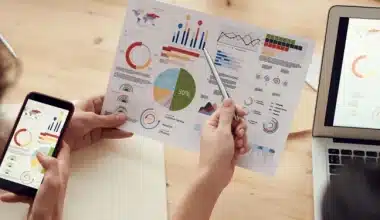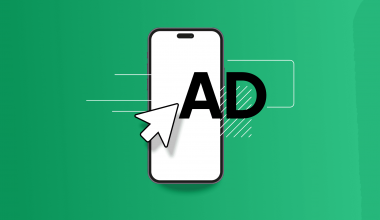Comparing your product to the competition no longer works. Due to clients’ heightened awareness, advertising resistance, and an 8-second attention span, traditional marketing methods no longer work. To understand and persuade customers, skilled salespeople are using strategic sales approaches. If you want prospects to buy, improve your sales technique. This will help you create a successful sales plan for your company. This article has compiled a thorough list of the top sales techniques for b2b, and closing-in sales techniques to assist you in increasing your sales.
Sales Techniques
A sales technique is a strategy employed by a salesperson or the sales team of a business to close more deals and increase revenue. It’s a tactic to improve a company’s sales procedure. A sales technique is adaptable and open to change once its efficacy has been demonstrated through testing.
The following are excellent sales techniques that sales professionals can employ with their team:
#1. SPIN Sales Technique
This technique involves when salespeople can encourage prospects to ask the right questions. SPIN employs inquiries to convince potential consumers they need a product or service. Please ask:
- How does your organization handle the hiring process?
- Do you find it tough to filter through multiple applications?
- How might a lengthy hiring process affect the business?
- How might a month-long hiring process help the company?
Asking about the prospect’s circumstances can help you decide if the product is right for them and connect their situation to the product’s use. Problem inquiries reveal the prospect’s issues. The question prompts consideration of potential issues if prospects fail to overcome their difficulties. The need-payoff inquiry prompts the potential client to consider how fixing the issues they’ve identified can improve things
#2. SNAP Selling
When implementing the SNAP sales method, attempt to think like your prospects to acquire their trust and better understand their goals. The acronym is “Simple, Invaluable, Align, and Prioritize.” Hence, provide prospective buyers with relevant product information. Sales presentations should be concise and focused on the company’s products or services.
#3. Challenger Sale
Hard workers, reactive problem solvers, lone wolves, and relationship builders are less successful than challengers. The challenger persona is the most effective, but the authors say every salesperson uses one.
This persona’s marketing influences them. Some salespeople care more about corporate success than sales. They discover market issues, track trends, and offer creative solutions to prospective clients. Once they’ve earned their trust, they can introduce the products or services. They also work hard to reassure and refute potential clients.
#4. N.E.A.T Selling
Listening to the prospect helps the NEAT selling technique understand their wants and get more information. By helping prospects solve their difficulties, salespeople put prospects’ needs above their own financial ambitions. Abbreviations include Needs, Economic Impact, Authority, and Time.
“Need” means the need to grasp problems and propose answers beyond the obvious. Showing potential clients the financial benefits of their actions is called “economic impact.” Last but not least, other examples of authority include a schedule of the critical event that could sway your prospect’s choice and discovering the company’s powerful employee who can connect you to the decision-maker. Employ NEAT selling using these guidelines:
Prospecting Sales Techniques
Sales prospecting techniques are any method a salesperson does to find new leads and engage with them. Warm phone calls, social selling, email outreach, and event networking may work for sales organizations and industries.
Prospecting sales techniques used to be mostly outbound and inbound. An outbound method required the salesman to make “cold” calls and email potential consumers who had not previously expressed interest.
In contrast, inbound sales push salespeople to build rapport with prospects and only contact or email individuals interested in their product or service.
Most salespeople agree that a mix of inbound and outbound selling is the best technique for sales prospecting.
List of prospecting sales techniques
#1. Make Friendly Calls
It’s not essential or wise to be frosty when greeting new clients. Warming up your prospects before the first approach can be effective.
To increase your chances of a positive reaction, introduce yourself or your firm to the prospect before calling or emailing.
For example: talk about the buyer’s social media post, connect, or “like” a LinkedIn status update or job change announcement
#2. Be an Influencer.
You may develop your brand and win the confidence of new prospects before ever speaking with them by establishing yourself as a thought leader or subject matter expert in your area.
Additionally, you can position yourself as a thought leader by launching a blog, publishing guest pieces for trade publications, and giving talks at conferences and trade events.
This helps with the objective of the first strategy, which was to have your name in front of leads before the first contact.
#3. Become a Reliable Source.
Selling isn’t enough to succeed. After the transaction, you must remain your client’s resource. By being a solution provider rather than a salesperson, you can increase customer referrals.
These strategies will help you introduce yourself to a potential customer. If you support customers before and after the transaction, they’ll remember you and help you again.
#4. Make Use of a Script.
A concise script can help new salesmen address common issues, use acceptable wording, and also avoid awkward pauses when prospecting.
Sales veterans recommend avoiding scripts to sound more authentic.
Even still, some people keep to a script because it’s so ingrained in their thoughts. You should always be mindful of your prospects’ needs and alter your approach whether you follow a script or not.
#5. Don’t Sell.
Prospecting is the first step in selling, but selling is not what is sold. The goal is to qualify and add leads to the sales funnel. Before selling, many steps must be taken.
In today’s sales techniques, prospecting must prioritize relationship building. If you sell too soon, the customer will feel pressured. Trust can make the prospect and you more comfortable, making selling methods more effective.
#6. Follow Up
At each stage of the deal, update the prospect. Whether you’re delivering new resources or confirming your next meeting, you may build a connection with your point of contact by calling or emailing them.
It also helps you become the prospect’s go-to resource rather than just “checking in.”
#7. Use The Video
Potential clients may be more interested in your outreach if it includes a video. You can use it to introduce, provide details, or finish a qualifying, connect, or discovery call. To grab prospects’ attention, add “video” to the subject line and attach a thumbnail image.
#8. The Prospecting Time Period.
Prospect daily. Prospecting is the hardest for over 40% of salespeople and Prospecting time builds your pipeline, which leads to more talks and equally improves win rates
Utilize social selling to contact prospects everywhere. Social media is where most of your product shoppers are (e.g., Twitter, LinkedIn, Facebook, etc.). Provide them with relevant information and answer their questions.
You can also earn more through social selling. Businesses that routinely use social selling are 40% more likely to meet their revenue goals.
#10. Ask for Referrals
Asking for referrals is your strongest prospecting technique for sales. After closing a deal, ask the prospect or champion if they have any professional relationships.
In your follow-up emails over the next few months, express your quest for new contacts.
As an example, once your client registers and expresses satisfaction, “I’m pleased to learn that Sunrise Staffing Software Solutions has been helpful. Are there other businesspeople in your network who could benefit from talking to us?”
Closing in Sales Techniques
An approach to encourage potential customers to make a purchase is through sales closing techniques. A process is required for a transaction to be successfully closed. You must stimulate their interest, astound them with the advantages, and then astound them with an exceptional offer. Even yet, it is still easier said than done. As a result, sales teams use a range of closing techniques. What works well for one lead might not work well for another.
You would be the ideal SDR to comprehend how challenging the sales process is. Bringing potential customers to the finish line could be challenging. Hence, we came up with a list of closing techniques that your salespeople might employ.
Do you know the difference between strategy and technique? A strategy is a plan for doing something. A technique helps you achieve that goal.in order To attain the desired results, your sales closing strategies should comprise a variety of closing techniques. If you want to improve your sales closing techniques, try these closing suggestions.
#1. Forming a Presumption
Thinking your prospect is ready to close may persuade you. Evaluate if this item suits your needs or is worth the price. Inspire hope. Good intentions can persuade. Presumptive queries make prospects think.
#2. Presenting an Alternative
Switching products can help you complete the transaction. Like a buyer seeking price or features. Offer them a better alternative if it fits. Alternatives aid decision-making.
#3. By Asking a Direct Inquiry
Prospective clients are considering your products or services. They test it. Ask if they would buy it immediately if it did X. Utilize what works. It could fail.
#4. Establishing a Sense of Urgency
Sales prospects can be accelerated. Hope it works. “Limited time offer” or “few slots” strengthens your conclusion. Of course. Your prospect will lose faith if not. Rumors spread quickly and damage deal-closing.
#5.Making a Recommendation That is Expert
built trust? You might recommend (that they actually take). If the lead trusts you. Kind, witty, and informed. Avoid pricey proposals to enrich oneself. It could lose the lead’s faith if it doesn’t fit.
#6. Implying “Final Opportunity”
“This sales closing technique works best for expiring limited-time offers. Fast-track the lead’s decision. “This is the last chance to lock in this pricing.” “30% off today’s signups” is another possibility. Urgency convinces leads to buy. To succeed, properly estimate your product’s value. This approach makes refusal difficult.
#7. Summarizing the Key Ideas
Summarize. Discuss their issues and remedies (to stress the benefits and value). Address the rectified concerns and make a tempting offer.
Start when they want.
#8. Offering a limited, undesirable option
Consumers search for the best deals. If you cannot lower the price, provide a less appealing but cheaper choice (but more affordable). Eliminating a great feature reduces expenses. Without it, they won’t buy. Instead of rejecting the price, they will finalize the first deal.
#9. Asking Low Impact to Get Information.
Low-impact queries are friendlier. This may work if you’re talking to a new lead you don’t know. Showcase your product’s benefits before asking a question. If I could cut lead management time in half and database accuracy by 20%, would that meet your business goals? If your offer is accepted, emphasize its benefits. To encourage the lead to keep talking without pressure to decide.
#10. Providing Something Purely Voluntary
Whether you are a B2B or B2C customer, the consumer in you will always get excited about a free gift. Therefore, take advantage of this to close leads. Offering things for nothing is one way to take advantage of this. Including a tool, service, or item without charging extra, for instance. It gives the prospect a sense of worth and exclusivity. And they could be tempted to accept your offer. Humans feel compelled to repay favors, so this is an example of the reciprocity principle in action.
B2B Sales Techniques
The following techniques are specifically for B2B sales:
#1. Get to know your prospective consumers.
Any sales technique requires research, but knowing B2B buyer needs is crucial. B2B buyers have restricted budgets and diverse needs, so understanding their industries and potential issues is vital.
#2. Employ self-service and automated processes.
Digital tools help salesmen sell. The average salesperson spends over 65% of their time on non-selling chores, which may not seem significant. Automation and self-service let salespeople serve customers.
#3. Respond promptly to queries
It’s an easy b2b sales technique. B2B clients dislike slow response times, thus companies who respond quickly will win their business. There’s no need to ignore client experience if an interaction is always possible.
#4. Don’t just sell—advice.
It is preferable to comprehend B2B buyer problems than to provide remedies. It’s a crucial B2B sales technique since high-value B2B sales mistakes can bankrupt a company. According to Salesforce’s State of the Connected Consumer research, 78% of B2B buyers want salespeople who can advise them.
#5. Build relationships
B2B sales techniques are ultimately P2P – person-to-person – sales techniques. B2B partnerships persist longer than B2C ones, which usually entail one-time transactions. Discuss potential leads with decision-makers.
#6. Become social
Since it makes sense to engage with clients where they already congregate, B2B businesses should step up their social media engagement. Don’t undervalue the value of these techniques in B2B sales given that studies have revealed that 20% of corporate users now use social media as their primary means of communication.
#7. Develop trust.
Younger B2B consumers are more open to ethical marketing than their more senior counterparts. On Maslow’s Hierarchy of Needs model, altruism may have been put lower than concepts like cost-value relationships, but for millennials, it is a deciding factor and an important b2b sales technique.
Before approaching sellers, these younger B2B buyers frequently conduct research, and if it seems that your beliefs don’t match theirs, they could not approach you at all.
Sales Techniques Training
Just like with any skills, even naturally talented salesmen need to continually improve their sales abilities. Here are some ideas for training and growing your sales team.
#1.To Inspire and Train, Use Success Stories
Sales models need examples. Salespeople need wins. therefore Choose case studies that show what worked and what didn’t and the process (from first contact, through closing a deal, all the way to follow-up). Trends, analytics, and good sales practices helpAfter presenting the facts and success story, further, divide the strategy into digestible actions for your team to boost sales. Many educational areas can use the approach. Field case studies give salespeople confidence.
#2. Motivate Your Group
Performance-based remuneration helps salespeople. Sales training, Commissions, flexible scheduling, and other incentives encourage salespeople. It also motivates most students.
#3. Collaborate with Other Departments.
Consider approaches to improve internal communication in your company. Your sales staff may be siloed to reduce workload. Integrating your sales force with various departments might help you train in customer service and product development. However, make sure everyone knows each department’s principal objective. Whether you work in sales or customer service, most companies value happy customers. Your sales staff will perform better if they understand how your organization works.
#4. Study with Influential People
Check out your company’s and industry’s natural leaders. Workshops and simulations for product and sales training start the team-building process. Consider recruiting thought leaders from your industry to provide more detailed reasoning and firsthand knowledge. If it follows commands, your team will do this again.
Subject-matter expert training sessions should take a few hours every month. Invite someone with experience in social selling or closing challenging deals to describe their techniques and what works for them.
#5. Micro Train Regularly.
Better learning isn’t usually the outcome of longer sessions. By designing bite-sized training, we can make use of the brain’s inherent capacity and improve memory. To change your business from a one-time event into a continuous activity, use microlearning and training.
To refresh their knowledge of the sales process, give your sales staff micro training via videos, e-learning webinars, and sales calls. Your sales staff can utilize a learning library you’ve created for them to progress through part of the course material at their own leisure.
What Are the 4 Selling Strategies?
The use of scripts, needs-based selling, consultative selling, and strategic alliances.
What Are the 7 Keys of Selling?
They prospect, build rapport, determine needs, propose solutions, address objections, close the deal, and obtain repeat business and referrals.
What Are the 5 PS of Successful Selling?
PRODUCT, PRICE, PROMOTION, PLACE AND PEOPLE
How Do You Convince Customers?
- Provide straightforward and thorough descriptions of your products.
- Provide specific examples of how your goods have helped customers.
- Highlight the distinctive features of your products.
- Provide a little bit more than is required.
What Is ABC Selling Technique?
Always Be Closing (ABC) is a catchy acronym for a sales technique.
It means that a salesperson using the routine should constantly seek out new prospects, present their offerings, and ultimately close a deal.
What Are the 4 Types of Sales?
- Transactional selling.
- Solution selling.
- Consultative selling.
- Provocative selling
conclusion
Sales techniques are tactics that improve a company’s sales process. Its sales strategy is adaptable and open to change following initial trials to assess its efficacy.






